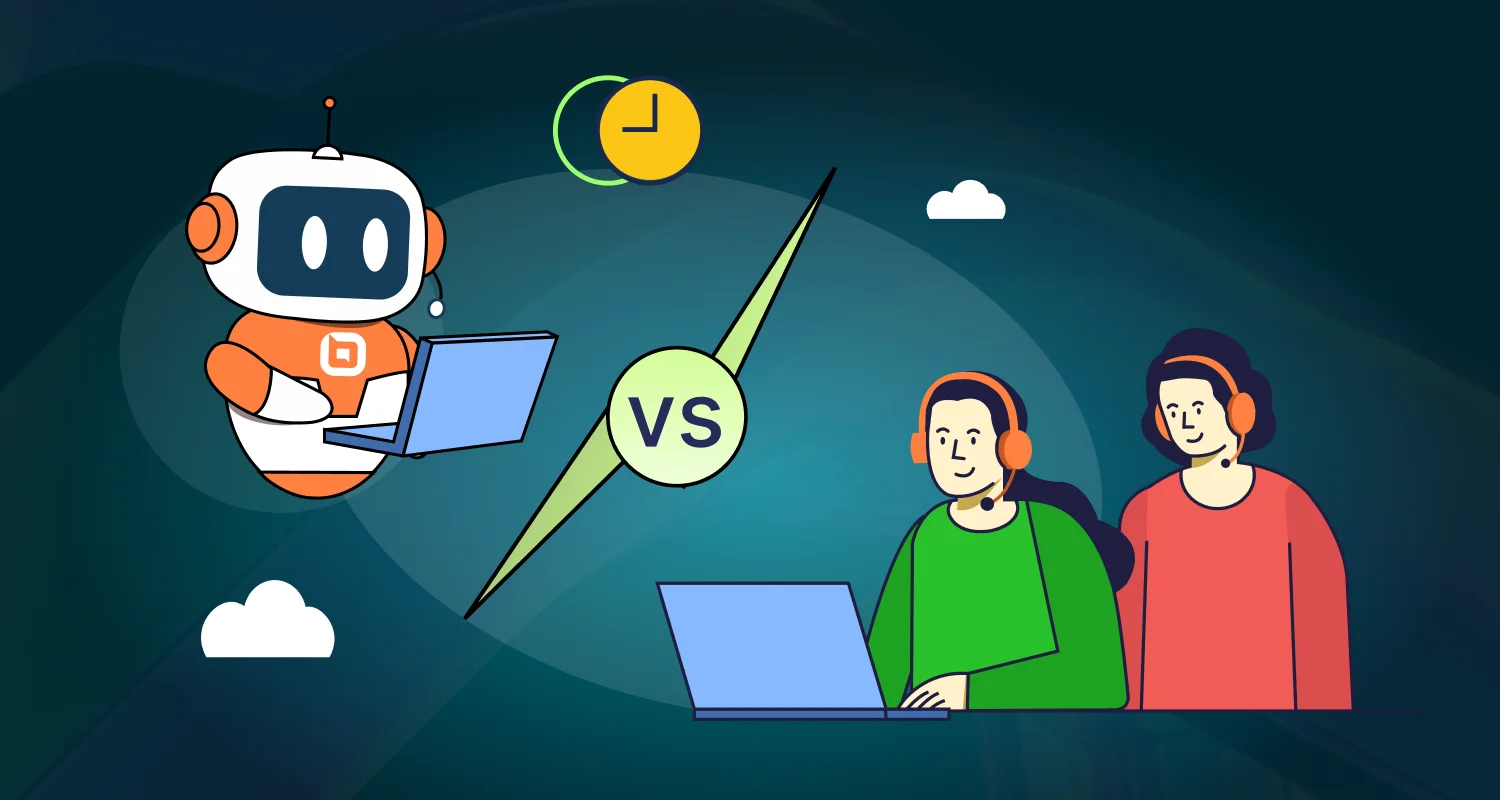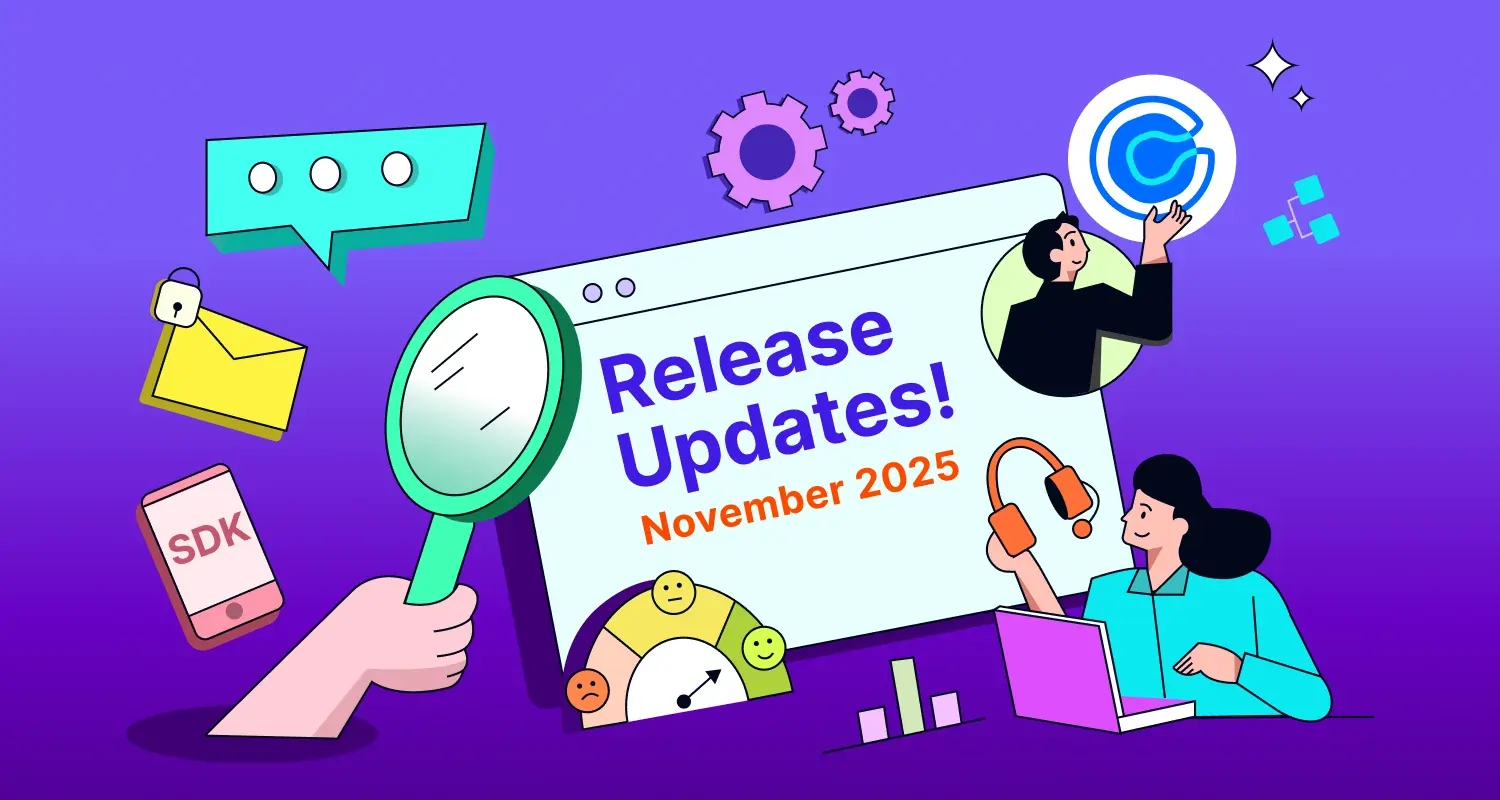Telecom providers are no longer competing solely on expanding network connectivity; they’re striving to win over subscribers through exceptional telecom customer experience. Today’s network users expect support that’s easy to access, fast in resolving issues, and feels genuinely helpful.
Poor client service drives approximately 31% of customer churn in telecom, making it the second-leading cause of customer defection after network quality issues.
Omnichannel support helps network service providers meet these customer expectations by delivering consistent, personalized telecom customer service across all touchpoints.
In this blog, we’ll explore how businesses in the telecommunications industry can implement and scale a truly effective omnichannel support strategy that boosts telecom customer experience.
Why is omnichannel customer experience in telecom industry important?
Subscribers demand more than reliable connectivity; they want support that’s personal, seamless across every channel, and always accessible.
According to McKinsey, 71% of customers expect personalized experiences from brands they interact with and 76% get frustrated when they don’t find it.
Providing an omnichannel customer experience bridges this gap by enabling network providers to deliver seamless interactions that meet subscribers on their preferred channels.
Beyond driving retention, exceptional omnichannel CX delivers tangible advantages for telecom operators.
- Increases customer satisfaction and loyalty: When interactions are streamlined and personalized across all customer service channels, subscribers feel heard and valued. Consistent, positive experiences build trust, which in turn fosters loyalty.
- Lowers operational costs: Omnichannel telecom customer experience combines AI agents, automation, AI-powered responses, and self-service options to handle routine queries, reduce call center load, and cut support expenses.
- Improves agent productivity: By managing all conversations in a centralized inbox, agents avoid switching between platforms and respond faster. Automated ticket routing directs complex queries to the right agent for efficient support.
- Drives upsell and cross-sell opportunities: Omnichannel telecom CX provides a unified customer view, allowing telecom providers to understand subscriber preferences, usage patterns, and past interactions, enabling personalized offers and recommendations.
- Enhances revenue growth: By creating seamless, personalized interactions across all channels, omnichannel telecom support strengthens engagement and loyalty, reducing churn and increasing lifetime value.
How can you build omnichannel CX in telecom companies?
Omnichannel CX in telecom means intelligently connecting channels so subscribers can choose their preferred touchpoints while agents maintain full visibility across interactions.
To make this work, network providers need a solid strategy, the right technology, and a customer-first mindset. Here’s how to get it right:
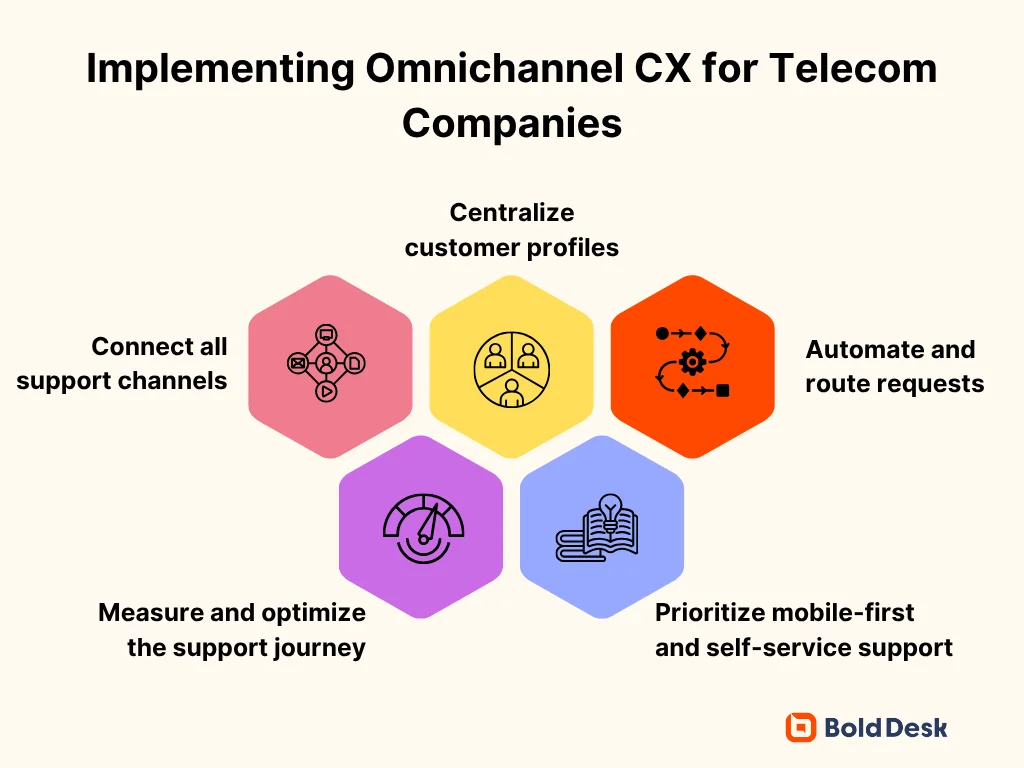
Connect all support channels into a unified inbox
Telecom clients engage through SMS, WhatsApp, email, live chat, and voice calls. A unified inbox lets agents manage all conversations in one place, ensuring faster responses and personalized customer experiences.
Since customers often switch channels during a support journey, omnichannel customer service keeps context intact, preventing information loss, and delivers a smooth, consistent experience across every touchpoint.

For example
If a user starts a query via Facebook Messenger and follows up via email, the agent can view the full history without switching platforms, ensuring no request ever gets overlooked.
Centralize customer profiles for contextual support
Support agents need complete visibility into customer data-plan type, device history, usage patterns, and past interactions.
A robust contact management system maintains a unified customer profile, enabling agents to deliver personalized responses and resolve issues efficiently. This is especially helpful for billing inquiries or service upgrades.
Automate and route requests intelligently
Routine queries like checking data balance, activating SIM, or troubleshooting network issues can be handled by AI-powered tools such as an AI agent or a bot.
Automated ticket routing ensures that complex issues are directed to the right agent or department, improving resolution speed and client satisfaction.
Prioritize mobile-first and self-service support
Most digital natives prefer solving issues directly from their mobile devices. Offer AI-powered self-service options in your mobile app and send proactive alerts for usage, payments, upgrades, and outages before customers need to ask.
When human assistance is required, smart queuing systems minimize wait times and ensure a smooth handoff from self-service to live support, keeping the experience seamless and frustration-free.
Measure and optimize the entire support journey
To deliver exceptional telecom CX, begin by monitoring key customer experience metrics like resolution times and satisfaction scores across voice, chat, email, and social channels.
Go beyond basic tracking with predictive reporting and analytics to identify patterns, such as outages or peak periods, that impact service quality.
Integrate these insights with real-time traffic data to forecast demand and optimize support operations. This proactive approach ensures faster resolutions, better resource planning, and a consistent omnichannel customer engagement that keeps them satisfied.
Real-world examples of omnichannel CX in telecom
Omnichannel customer experience isn’t theoretical; leading telecom service providers are already proving their transformative power.
Here are standout examples with analysis of what makes them successful:
Vodafone: Seamless AI-powered and human support
Vodafone‘s AI assistant, TOBi, supports customers across digital channels and routes them to live agents when needed, without losing context.
The brand maintains consistent communication across all customer touchpoints, reinforcing trust.

AT&T: Unified customer journey across channels
AT&T connects online and offline telecom customer experiences effortlessly. Subscribers can start a device upgrade online, get support through chat, and finish at a store, all while agents have access to previous interactions.
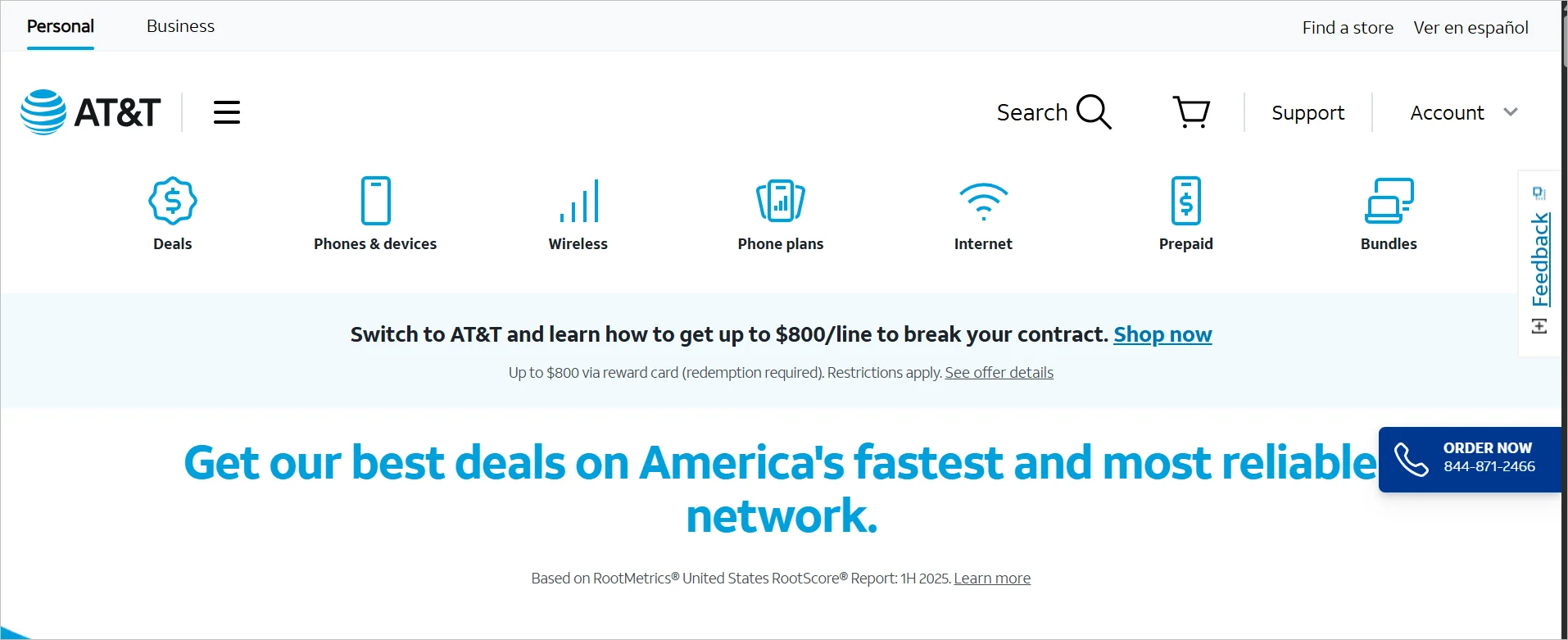
T-Mobile: Proactive support with AI and analytics
T-Mobile predicts issues before customers report them. Its system identifies billing anomalies or disruptions and reaches out with solutions, dramatically reducing customer churn and boosting retention.

Transforming telecom CX with omnichannel support
When done right, omnichannel CX turns support into a growth engine. Telecom companies that embrace seamless, connected interactions don’t just reduce churn, they build relationships that turn customers into advocates.
Customer service platforms like BoldDesk help telecom teams deliver unified, AI-powered, omnichannel support that enhances efficiency and elevates customer satisfaction.
Ready to transform your customer experience in telecom? Get in touch with our support team and start delivering true omnichannel experiences across all channels.
Let us know your thoughts in the comments section below.
Related articles
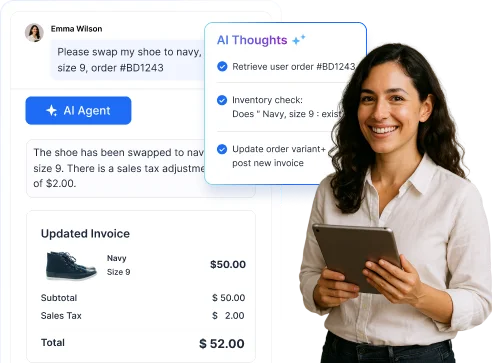


















 Email Ticketing System
Email Ticketing System Shared Inbox Software
Shared Inbox Software Multi Brand Help Desk
Multi Brand Help Desk Internal Help Desk Software
Internal Help Desk Software Trouble Ticketing Software
Trouble Ticketing Software Mobile Help Desk
Mobile Help Desk 










